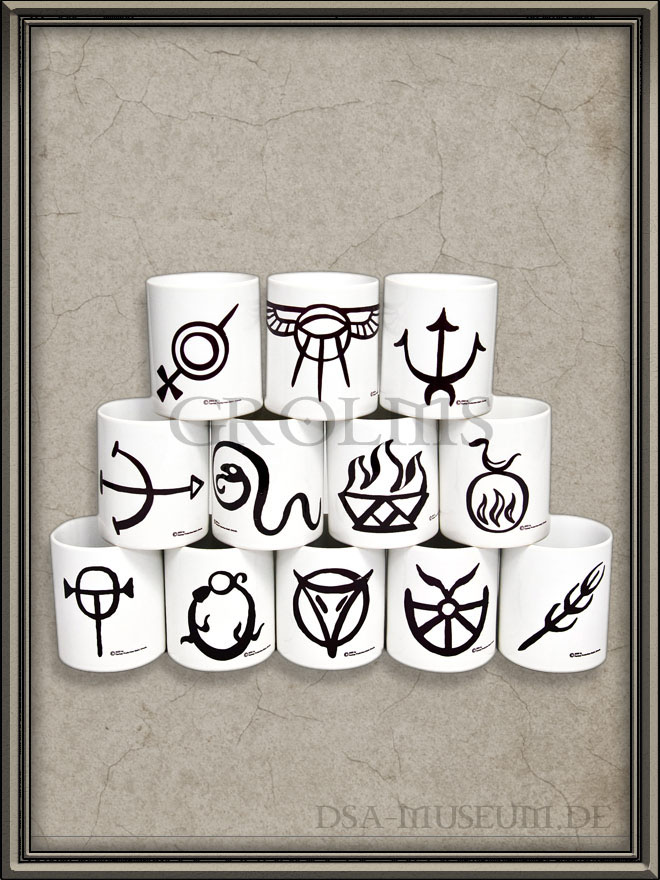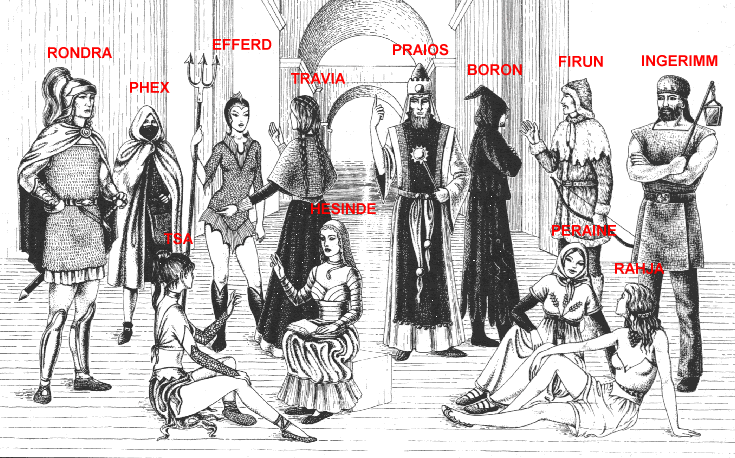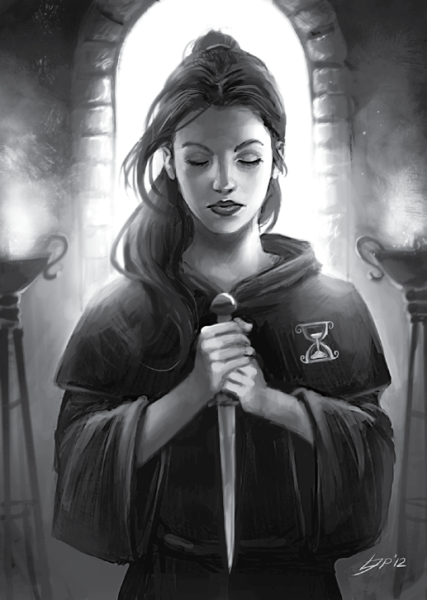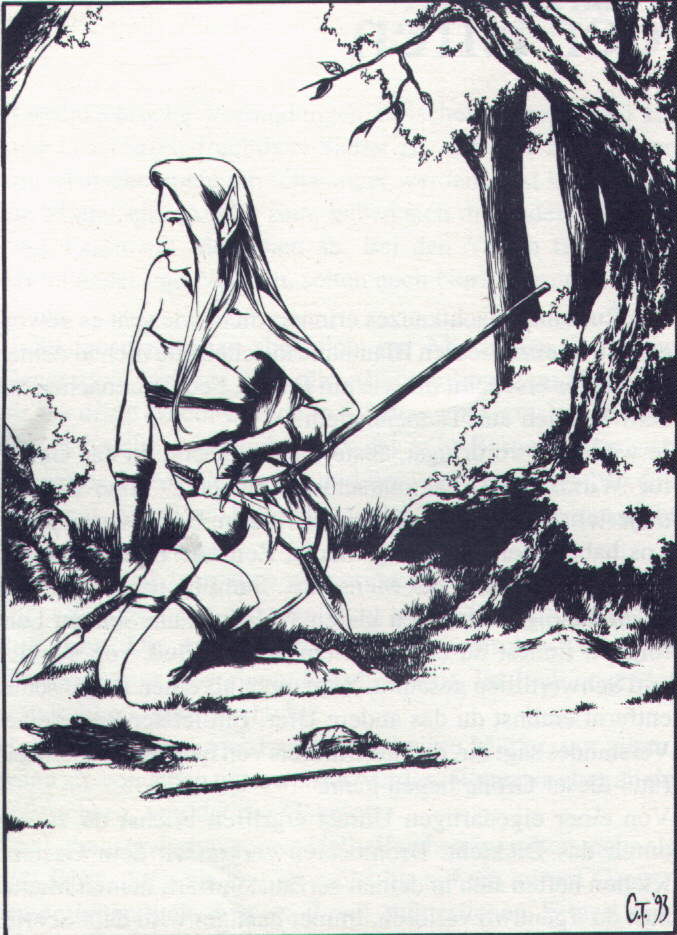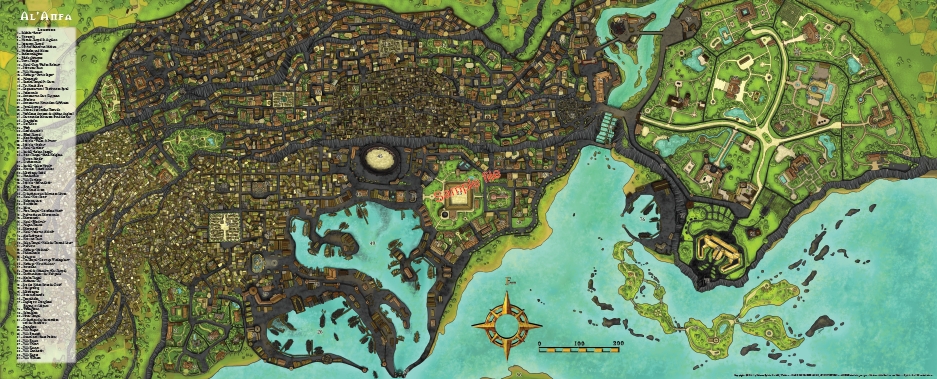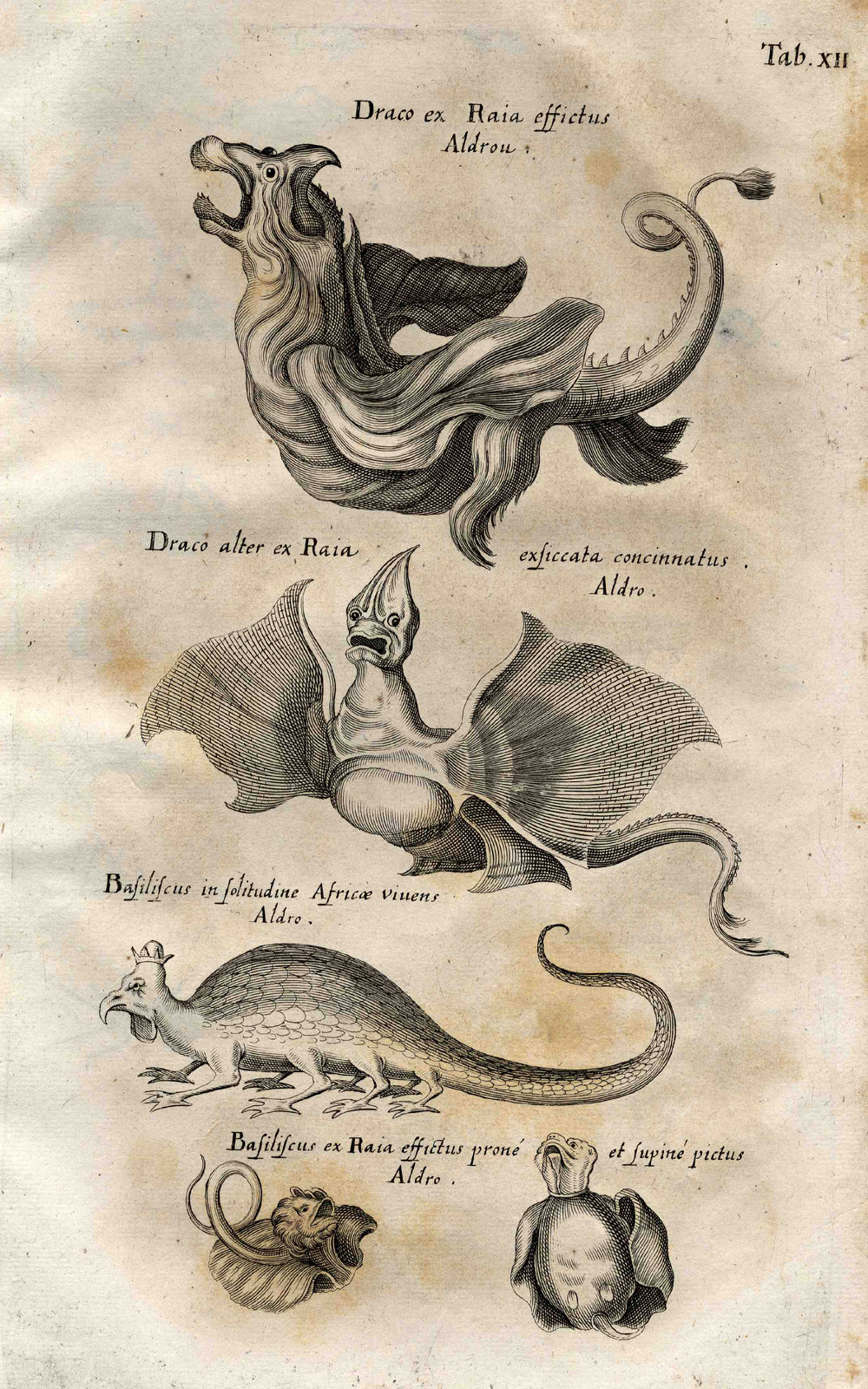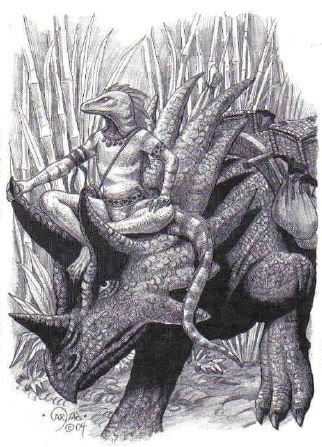The year is 1985. German boardgame company Schmidt Spiele has published the first edition of DSA (Das Schwarze Auge; known as The Dark Eye in English) one year ago - originally because they couldn't secure the rights for the German D&D translation, so they just decided to make their own game.
1st edition DSA is a fairly typical D&D clone for the time. Instead of roll over, you get roll under with 1d20. Instead of armor making you harder to hit, it absorbs damage if you get hit. You get active parry as well because of that. And you get a lot more starting hit points than in D&D - 35 if you're a dwarf (DSA treats races as classes up until 4th edition), 20 if you're a puny wizard. The system is level-based and you get to level up to level 21 to drive the point home that your character is better than in D&D. But you only get 5 stats instead of 6 - courage, intelligence, charisma, dexterity and anal circumference strength. You roll stats in order and if they aren't good enough to play as a dwarf or wizard or at least as a fighter or elf, you receive additional punishment by having to play as a generic adventurer who gets none of the extras that the other classes receive.
Because the basic rules clock in at a meager 64 pages with lots of white space and black and white pictures of lackluster quality, Schmidt Spiele decides that maybe it's time to give people more rules and an actual setting description. So they put out another box set, which looks like this:

Strictly speaking, the title translates to "adventure expansion game", which sounds as hilariously lame and unwieldy in English as it does in German.
Introduction
This booklet is written by late Ulrich Kiesow, who was creative director for DSA until well into 3rd edition. The credits mention 5 other people contributing to it, and they're basically Kiesow's gaming group. Ina Kramer, one of said 5 people, also did all of the artwork. Some of her NPC portraits still get recycled today, such as Fran-Horas the Bloody, emperor and demonologist, who has been abducted to the Netherhells over a thousand years ago, but which this book still wants you to give a fuck about. They succeeded at that for a lot of German gamers, in no small part because Fran-Horas the Bloody looks like this:

That guy's basically Kosheij the Deathless. Problem being that immortality is about the last thing you want when you get physically dragged into the Netherhells by pissed-off demons.
In the half page introduction, Kiesow mentions that the publisher got flooded with letters from fans who had all kinds of questions to the authors. Like, what the stats for a blowgun are or what the game's setting is like. Which is why he's now putting out the notes he made for his gaming group. He calls the 64 page booklet an "almanach" that describes Aventuria "in all of its details". Which is downright hilarious when you consider that in DSA4, the description of the continent has bloated to more than 3000 pages.
Chapter 1: The Origin of Aventuria
After the introduction, we're off to a 3-page chapter that gives us various creation myths for the continent. Half of the first page of that is made up by headlines to waste space. Then we get to hear about how the world was originally as flat as a pancake in the pan until some guy killed a couple wolf cubs and the parent wolfs got super pissed and because they're the giant sky wolves they tore up the pancake-shaped land to create mountain ranges and the places where they took a piss turned into lakes.
This is what Nivesian nomads actually believe. I need another sip of gin now.
After that, there's a one paragraph account of how Rastullah (Aventuria's not-Allah) created humans out of sand and his own blood. Then we get half a page about the dwarfs who think that their creator Ingerimm created the perfect dwarven master race. Then he stepped out of the dwarven mines, got blinded by the sun which caused him temporary madness and he created the rest of the world, which all sucks due to him being crazy at the time. The dwarfs don't really have an explanation for how there can be a blinding sun outside of the mines when Ingerimm hasn't yet created the outside world, but i'm fortunately too stoned to care.
The next account is from the people of Maraskan, who think the world is a giant frisbee that the hermaphroditic twin gods Rur and Gror throw at each other. Then we get paragraph that makes fun of a sect that believes that the world is actually spherical and orbits the sun and then the chapter closes with the creation myth of the Twelve Gods, which i'll talk about later in the religion chapter.
Chapter 2: Geography
This chapter is 4 pages long. One of these is taken up by a map of the continent, and the last page is 3/4 empty. The chapter begins with Kiesow telling the readers that medieval cartography totaly sucked and that they always have to keep in mind that this chapter tells them much more about Aventurian geography than the denizens of that continent will ever know and that not even the gods will ever have a view of that place that's as detailed as the map in that chapter. Well...the map's outlines are still valid 30 years later, but it is missing dozens of major cities that where just added later. I can't find the map online, so here's a more recent version to give you an impression of what we're talking about:

The people who believe that the world is a frisbee live on the big island to the east. Nowadays, they get eaten by Cronenberg-style body horror demons a lot.
We learn that Aventuria is one of three continents on a planet called Ethra (it's called Dere in German; both names are anagrams of "Earth"). Ethra is the third planet in a yellow dwarf solar system with nine planets in total. The continent of Aventuria is tiny, notably smaller than Europe. Because the climate there is conveniently wacky, you still get to play in all of the climate zones found on Earth, from polar icy wastes to deserts to tropical jungles. The human population is estimated as 1,2 million people, which never really worked out unless you declared most of the continent a wasteland, but whatever.
The text mentions that there's orks up north who live in an area imaginatively referred to as Orkland and that they eat practically everything, including insects.
Then it tells you about a new subtype of elf introduced in this box set, the wood elfs. It stresses that these only live in a single northern mountain range, the Salamader Stones, and that they do not venture outside of that place and that it's therefore highly unlikely that player characters will ever be these wood elfs that we've just been introduced to as a supposedly playable race because fuck you. That "yes, we have wood elfs, but please don't play them" attitude has somehow persisted over the editions and has been eagerly sucked up by a lot of players because they're stupid shitcocks who don't want you to play as an elf who regularly joins his tribe's ecstatic hippie hivemind by eating shrooms and who uses magic to run across the treetops. The latter two facts got introduced in later editions, though, so back to 1st edition.
Goblins get a brief mention. DSA goblins look like this:

DSA orks are of the hairy variety as well, but their fur is black.
Then, we're off to a paragraph about the Middenrealm, the biggest political entity of Aventuria. We'll get back to these assholes in later chapters. After that, we get passing mentions of the not-Renaissance-French/Italians of Horasia and the not-Arab Novadi of the Khôm desert. The last two paragraphs are about the South of the continent with not-Native Americans in the jungles and the people of Slaver's Bay Al'Anfa, who later developed into a mix of ancient Romans and Conquistadors who export tons of drugs from the jungle and their plantations and who also happen to live in a theocracy run by the priests of Boron, the god of death, silence, forgetting, sleep, psychiatry, dreams, prophecy and getting high as fuck. As you see, Boron is kinda greedy with his domains. You can meet his avatar in one of the DSA2 adventures and he's actually a pretty cool guy, so i'll get myself another gin and light one up in his honor.




